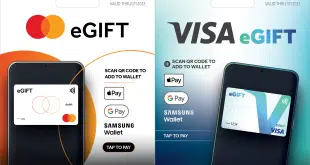As the payments industry waits for the commercial rollout of near-field communication technology, startups are jumping into mobile payments to fill the void. One of the latest attempts to bridge the gap between physical stores and mobile devices is FaceCash, which launched last month and allows consumers to pay merchants by displaying photos of themselves along with unique, identifying bar codes. The service, from Think Computer Corp., has signed five restaurants in its home town of Palo Alto, Calif., and enrolled about 100 consumers for FaceCash accounts.
Aaron Greenspan, Think Computer’s founder, says his company is talking to national chains, and he hopes to sign at least two by the end of the year. He’s also working on securing money-transmitter licenses for FaceCash and is in talks with several mobile networks about pre-installing the FaceCash app on their phones. Longer term, he hopes to move FaceCash into the business-to-business market and also position the service to handle payroll. “There are things we are building that I can’t talk about yet,” Greenspan tells Digital Transactions News.
FaceCash, which also enables person-to-person payments using the “bump” technology PayPal Inc. uses, has no charge for consumer accounts and offers features such as detailed transaction records and the ability to split tabs among multiple people. It also offers merchants a 1.5% rate, which is attractive compared to typical card discount rates (transfers among individuals are free). But it’s up against stiff competition for mobile payments from processors ranging from PayPal to more established startups like Obopay Inc. and Mocapay Inc.
It also must attract accountholders to appeal to merchants, and sign more merchants to attract consumers. Greenspan says he’s working on some consumer incentives, but isn’t ready to give details. On the merchant side, he says FaceCash’s low fee is often enough to get retailer’s attention. “It’s not a tough sell,” he says. “As soon as the demand is there, they’ll switch [because] it’s cheaper. Our main strategy is education.”
Once a consumer has signed up for an account, she can fund it by transferring money from her checking or savings account. Transfers are processed via the low-cost automated clearing house network. Card funding is not allowed for cost reasons. “Anything where we have to pay interchange is something we can’t do,” Greenspan says. Accounts are free unless the consumer insists on using a so-called free e-mail address, such as gmail or hotmail, which are harder to verify. In this case, the service levies a one-time $2.99 fee.
During the sign-up process, the consumer also submits a photo of herself. This photo appears on her phone screen and on the cashier’s PC screen when she’s at the store ready to pay for her goods. Also appearing on the screen is a bar code that further identifies the user and links her transaction details to her account. Merchants can use their existing bar-code scanners or buy one from Think for $30. Think’s software, known as ThinkLink, is made available to the merchant at no charge. To further authenticate accounts, first-time users must also show merchants a driver’s license with a photo.
By allowing consumers to use a virtual wallet and a mobile phone to make point-of-sale payments, FaceCash joins a growing list of companies that are seeking alternatives to NFC. A technology that sets up contactless, two-way links between mobile phones and POS readers, NFC has been hobbled by ongoing disagreements between mobile networks and banks over a variety of business issues.
Greenspan founded Think in 1998 while still in high school. He later created accounting software that ultimately became ThinkLink, a program that serves as the underpinnings for FaceCash and other products Greenspan hopes to launch. So far, Greenspan has been funding his company with his own money. “I am very wary of [outside] investors,” he says.
He may have to open his pocketbook far more than he has up to now. While FaceCash offers a potent set of features, along with low cost for interchange-weary merchants, some observers argue Think will ultimately have to fund significant incentives to attract consumers. “It’s all in the incentives and the points,” says Red Gillen, an analyst who follows alternative payments for Celent, a Boston-based research firm. “This is a big deal. Look at the amount of money Visa and MasterCard spend. That’s the level [Greenspan] is playing at.”
Attracting consumers is key, since most merchants won’t adopt a payments system unless they detect consumer demand for it. Indeed, Gillen argues the only reason PayPal achieved a breakthrough is that it was acquired by eBay Inc. “They were instantly thrown into an arena of buyers and sellers so they had the chicken-and-egg thing instantly figured out,” he says.
Meanwhile, if and when NFC does score a breakthrough, Greenspan says FaceCash will be ready for it. “When NFC comes around, we’ll happily transmit our numbers on NFC,” he says. “How we transmit our numbers is relatively trivial.”





